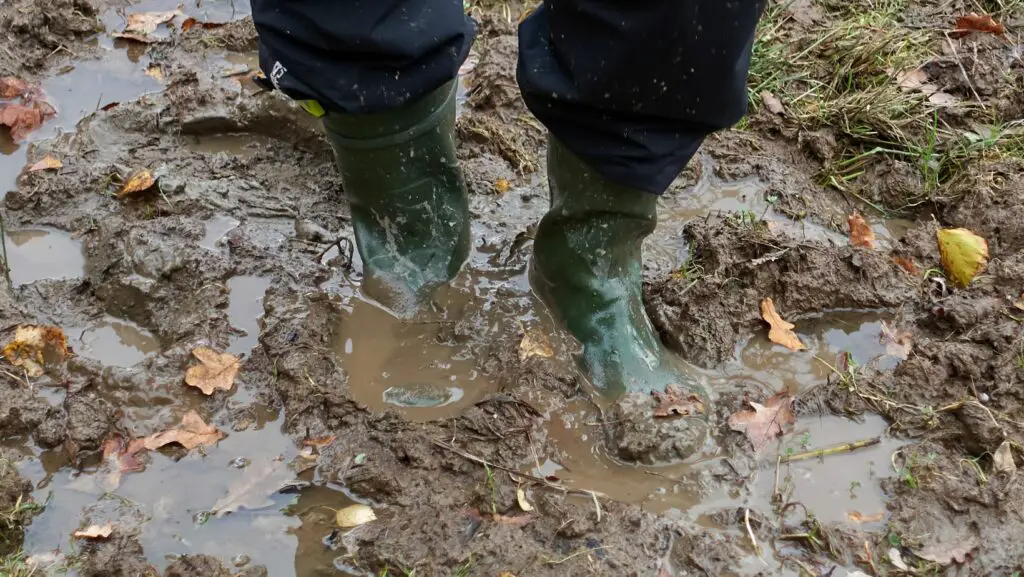
Is your yard always muddy? Build a french drain, and you’ll soon fall in love with your yard again.
If your yard is always muddy, it means that water is not flowing correctly, and this could eventually become a more pressing issue.
In this article, we will discuss different soil amendments that will help you fix a muddy yard. I have used one, two, or a combination of all of the following solutions in my backyard.
Having a nice, dry yard is possible, and today you’ll learn how to reclaim your backyard in no time. Continue reading to find the muddy backyard solutions that are easy and affordable:
Why is my yard always wet and muddy?
I definitely feel this question. I too was in your position a couple of years ago. It seemed that every time we had rain, my yard would turn into the muddy capital of the world.
In my desperation, I started to observe my yard to see where the excess water would come from or where it was stagnating. I tried to find the reasons why my yard was always wet and muddy, even if it didn’t rain hard.
It was during that time that I realized a couple of reasons why my yard was humid, wet, and muddy most of the year. Here are a couple of reasons why your yard could be like this too:
- A yard is always wet and muddy because it has a poor drainage system.
- It could also be because of the slope of the land and how the site is designed.
- The infrastructure gutters are dirty. Therefore, the water flow also gets interrupted by all the litter inside the gutters.
- Animals love muddy spots. Thus, a dog, cat, or even a pig could be the reason why the yard is always muddy.
- There’s not enough ground cover. If your soil is bare, there’s a higher risk of having a muddy yard.
How to dry a muddy yard? – Muddy Backyard Solutions
Here are three options that will help you dry a muddy yard:
Fix your current drainage setup
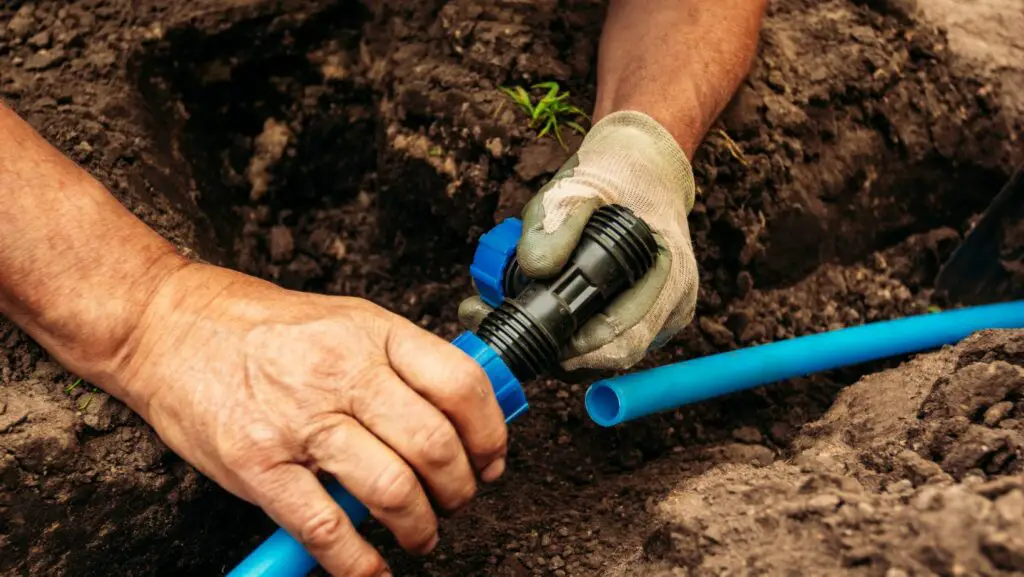
It’s time for you to observe your current drainage system and see where the flaws could be. Perhaps it only needs a little ‘tender loving care’ on your behalf. So, see where you need to maintain regularly and what you need to repair.
It is common for pipes to get clogged or for gutters to need a replacement. The more you observe and clean these pieces, the better.
Additionally, you could extend the gutters’ downspouts farther away from your house. This way, you’ll be able to divert the rainwater to a different area.
A PVC pipe could become your best friend in this situation; so dig a sloped underground trench, add the pipe extension and see if your problem is solved.
Install A French Drain
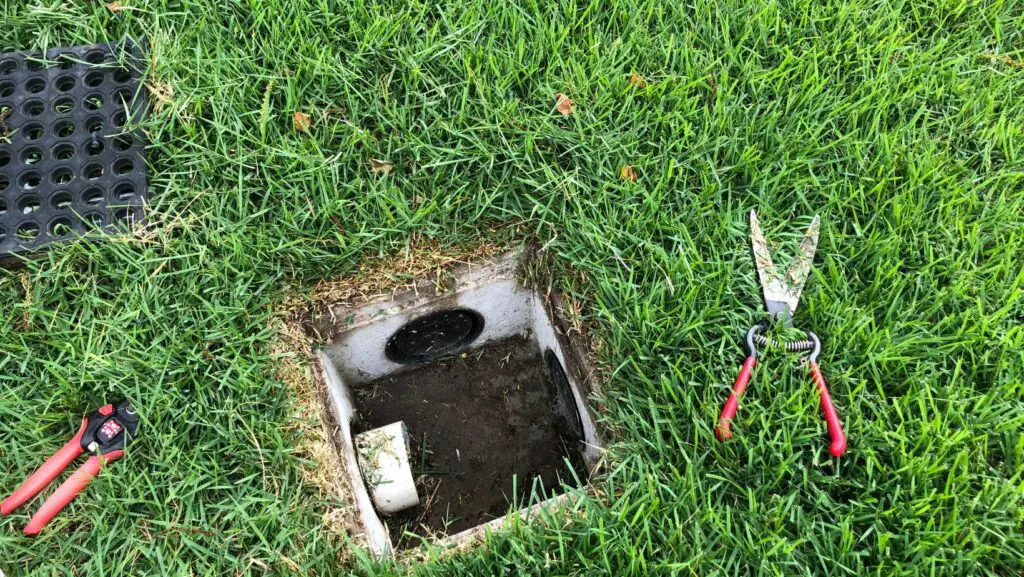
The first thing you’ll need to do is to find out whether you need a special permit from local authorities.
A French drain will allow you to re-work your soil in order to avoid having a muddy yard. This type of system is basically a trench filled with gravel, small stones, or rocks. You’ll also need a drain pipe with small holes at the bottom of the trench.
You could hand dig the soil to make the trench. Alternatively, if you have a larger area to dig, you could hire a machine to do this job for you.
You should dig the French drain at the lowest point in your property, you should aim for at least a one percent slope. This way, gravity will work in your favor.
Besides, your French drain should be on contour. In other words, you should respect nature’s slope to help your French drain flow the water correctly.
The depth of your French drain should be at least one foot to two feet below the ground’s surface. Usually, this type of drain is around six inches wide. Ultimately, you will need to observe your yard to realize what the best practices will be.
After digging the trench, you will need to add landscaping fabric, gravel, and then the PVC pipe. Add another layer of gravel, and finally place the topsoil.
The French drain could run leveled, uphill, or downhill. If it runs leveled, you will need to make sure it goes downhill for it to drain accordingly.
Have a rain garden
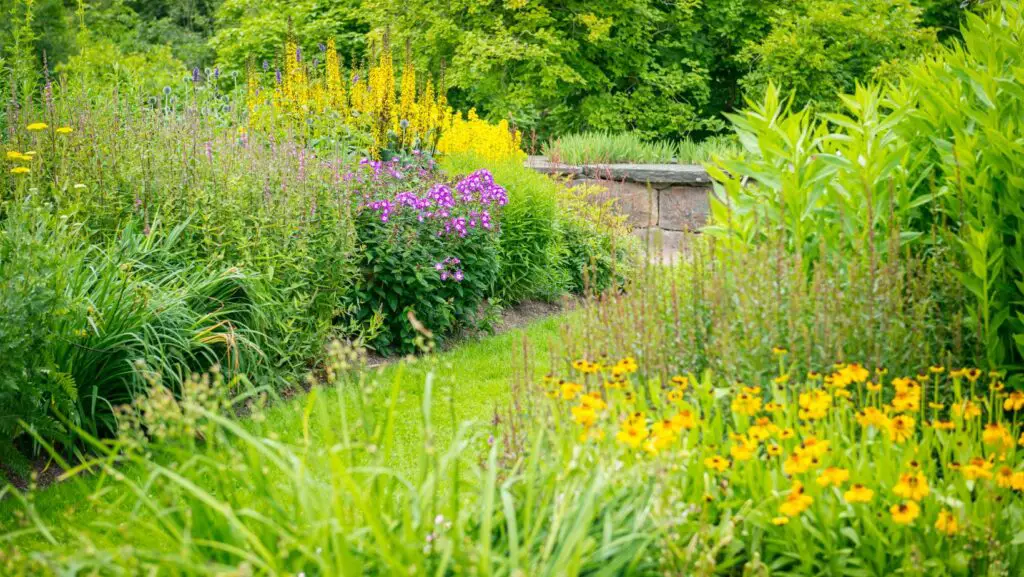
Working with nature instead of against is possible. However, this will require you to observe the problem, learn about the possibilities and solutions, redirect the energy, and implement an outcome.
If you have a muddy yard and would like to work with nature to solve this issue, why don’t you create a rain garden?
Rain gardens offer a great solution to those folks who would like to harvest the extra water from the gutters during and after a rain event. This way, your rain garden won’t need to be watered because it will absorb all the water that comes toward it.
Moreover, you could even dig up some swales that will allow the water to be spread out slowly throughout your land until it reaches the rain garden. Plant native flora, research what plants are water-tolerant in your area, and create a welcoming habitat for your local fauna.
If you have an excess of groundwater runoff and cannot afford to build a French drain, then a rain garden is your second-best option. Your problem is now becoming the solution!
Use mulch in your muddy yard
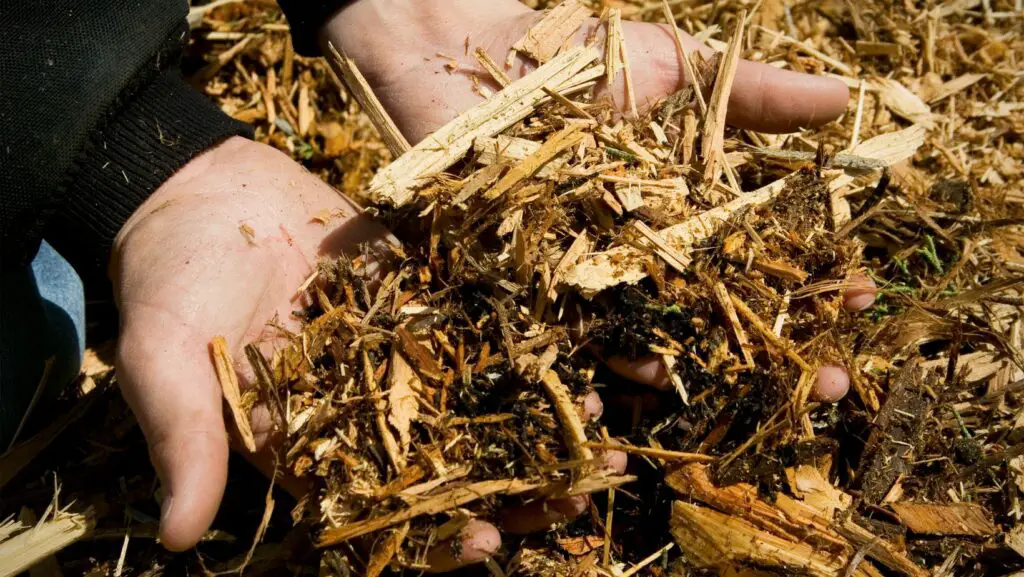
Using mulch in your muddy yard is an excellent choice that brings nutrients back to the soil.
There are plenty of mulch alternatives for you to choose from. From hay, straw, sawdust, or even wood shavings, all of these different types of mulch will do an amazing job absorbing water.
The best part of using mulch is that most of the time you could get it for free. Not only is it a widely available resource, but adding a deep layer of mulch brings organic matter to your soil that decomposes slowly.
These amendments are an excellent choice if you aren’t ready to do a French drain yet, or if you would like more time to observe how water flows in your land.
The only two possible negative aspects of adding mulch are:
- If you have pets they could think this area is their new bathroom. Chances are they’ll think you are pampering them!
- If you live in a windy area, you will need to reapply mulch constantly in order to maintain a deep cover system.
What to do to prevent a muddy yard from coming back
- You should observe your yard after rain. This way, you’ll know where your new system is working correctly and what areas need to be improved.
- Always invest in the best quality tools, pipes, and general equipment.
- Maintaining your gutters and pipes should be at the top of your ‘to-do list’. If you can clean the pipes and gutters twice a year, your system will function more efficiently.
FAQ
How do you landscape a muddy yard?
Landscaping a muddy area could be a challenge. However, think about the area’s slope, direction, and the purpose you would like to give to the site.
Sometimes you don’t need to regrade the muddy area. Instead, you could choose plants that are water-loving so they can serve a specific function: to absorb all the excess water that overflows in that direction.
Every climate has water-loving plants. Do some research and add them to your landscape as a practical solution.
Will sand help a muddy yard?
Sand will help a muddy yard, but it will only be a temporary solution. Make sure your sand is locally sourced; if not, this solution could prove to be really expensive in the long run and it won’t be as sustainable as the other options.
How do you turn mud into grass?
Mud is compacted soil. So, if you would like to turn it into grass, you will first need to bring some life and nutrients into it. You could do lasagna gardening (which is where you garden with layers on top of layers of organic material).
To do lasagna gardening, you could add grass clippings, grass seeds, and another layer of grass clippings. You’ll need to keep an eye on this area so the water that overflows doesn’t wash out the grass clippings or seeds.
Additionally, you could do a french drain to avoid water overflow or you could design a rain garden that will attract wildlife and pollinators to your land.
Conclusion
It’s time for you to stop being frustrated by the mess that’s in front of your eyes and work your way out of it, no matter how muddy it may get.
With these muddy backyard solutions, your yard will look and feel ten times better. A muddy yard doesn’t have to be a negative thing. On the contrary, it could work in your favor with the right landscape solutions.

Hi!
I am the guy behind Theyardable.com. I grew up on a homestead and I am here to share the knowledge I have and things I learn while living in the countryside.
